Business
Interview With Christopher Owens – Why Millennial Networking Is Different
Published
6 years agoon
By
Jie Kuang
Whether you are at an event passing out your business cards or chatting with someone a few states away through email, you’re familiar with networking. The question is, what changed? With the growth of technology, there’s no denying that millennials network differently. Meetups are organized and advertised through networking platforms or social media and filled with people of similar interests. Relationships are built and groups decide to stay in touch more regularly than just bumping into each other every now and then. We connected with the Founder of LincSphere, Christopher Owens. He built the app to optimize power networking and make it easier to connect with others. In this interview, Christopher was able to pinpoint networking flaws and gave advice on how to grow and optimize your network.
What are some tips you can give for networking?
When you meet or speak with a networking contact, be genuinely INTERESTED in them. Ask a lot of questions and be curious. To be clear, DON’T ASK PROSPECTING QUESTIONS. Just learn more about them, not only as a professional, but also as a person. Your goal for this line of questioning is, “Is there any way I can add value to this person’s professional or personal life.” Of course you might be able to help them by selling your product to them, but you should initially place that idea to the side and focus on other ways you can help.
From interacting with this person, see if there is any reason you would want to develop the relationship. Of course, if they want your product, you would want to talk with them further, but there are many other potential reasons for engaging further. Maybe they could be a good referral partner for you. Maybe you have the same hobbies or feel strongly about supporting the same causes. Maybe you could see yourself mentoring them or vice versa. But either find SOME reason for wanting to engage further, or allow yourself to let that contact fall to the wayside, at least for now (maybe that will change the next time you run into them). It is true that you can be too narrow-minded in your networking, only keeping the business cards of potential customers. But it is also true that you can be too unrestricted in your networking, keeping the cards of every single person you meet ‘just in case’. When you do that, you will end up diluting your interest for networking in general, because you feel obligated to follow-up with contacts you have no real interest in.
What are common networking mistakes?
1) Talking too much and too early about yourself instead of asking questions and listening to the other person.
2) Not following up regularly with the people you want to build relationships with. There’s a statistic in sales that 80% of sales happen from the 5th to the 12th contact with someone. The same basic principle applies to building relationships in networking.
3) Not networking until you need it. Networking is the LONG game. It takes time and repeated contact to build a relationship usually. Sure, there are occasional times you will get instant gratification from a networking contact (someone wants to do business with you right after you met them) but those instances are the outliers. Start building your network when you DON’T need it and it will be there for you when you do.
What is the biggest difference between small businesses and startups?
Well, the best definition I’ve ever seen is from author Steve Blank, who explains that a startup is not merely a smaller version of a larger company. It is a temporary organization in search of a business model. In other words, a startup ‘isn’t quite sure what it will be when it grows up’. Startups are often creating new markets, trying to solve problems others have not tackled yet, or finding an innovative way to solve an old problem. So startups are always operating on a certain set of ASSUMPTIONS about who their customers are, what their problems are and what kind of solutions they are looking for. The startup, in it’s early days, is testing their assumptions and seeing how the market reacts. In the end they may find that the customer they are really servicing and the exact problem they are addressing are a few (or many) degrees away from where they started, and so they adjust course and change their business model to fit that. Or they could find that they were completely wrong about the problem they were solving and might shut down.
On the other hand, a small business is starting a company of which there is already a clear market, clear customers, a clear problem and lots of competition. There are FAR fewer unknowns in a small business. Their main issue is just how well they execute the processes and methods that have already been proven out hundreds or thousands of times by other companies.
How has networking changed for millennials?
Well I can’t speak from the millennial perspective, because I’m not one. But the main difference I see now from a decade or so ago is that there are so many more ways to communicate. Used to be you could meet someone in person, call on the phone, or email and that was it. Now if you reach out to a networking contact you can call, text, IM, email, Skype, connect on FB, Twitter, LinkedIn or a host of other applications. For the most part, this a great advantage over what previous generations had. Not only because of convenience and being able to find the right communication medium your contact likes to use, but also because anyone has a decent chance these days of connecting directly with celebrities or business thought leaders if you do it right. And then there’s how easy international communication is. You no longer have to have a lot of frequent flyer miles in order to have an international network. It’s an amazing time to be networking.
What is the problem LincSphere is trying to solve?
There are two problems, actually. The first is that most people are not organized at all with their networking relationships. They collect a bunch of business cards at events and those cards sit in a pile somewhere on their desk or in a drawer, not doing anyone very much good. There has never been a complete business networking CRM-like tool for easily coordinating all of the actions a person does or should do when building networking relationships, and so we wanted to provide that.
The second issue is actually the more important one. It is that most networkers treat networking as a kind of a self-interested prospecting game. Kind of like cold-calling in person. When done like that it’s kind of like hunting or fishing where the person is only looking for the opportunities immediately available. But the best networkers out there – the power connectors – approach networking more like farming. They are planting seeds, caring for the growth of those relationships and playing the long game. They know that the watchword of all networking is “generosity”. They help their connections without any expectation of a ‘quid pro-quo’ or tit-for-tat. They view it more like ‘karma’ in that they give help freely and just figure it will come back to them somehow. And LincSphere was specifically designed in all its features to promote that generosity mindset in our users.
When is the launch date?
Well as far as the iPhone goes, we ARE launched. The app has been out since summer 2016. We are working on building a web interface now and we’re also working to bring on investors so we can launch the Android version and do a lot more.
Jie writes about influencers and startups in various industries. She is a designer turned techie, and when she is not writing, you can find her in her workshop working on her next big project.

You may like

AI tools have evolved fast, and entrepreneurs now rely on them not just to automate tasks but to scale entire workflows. That said, it’s not surprising that many business owners are leveraging the power of cutting-edge technology. And this is where AI tools for entrepreneurs come in. Let’s look at what they are and a few examples you can check out.
1. Aomni Agent
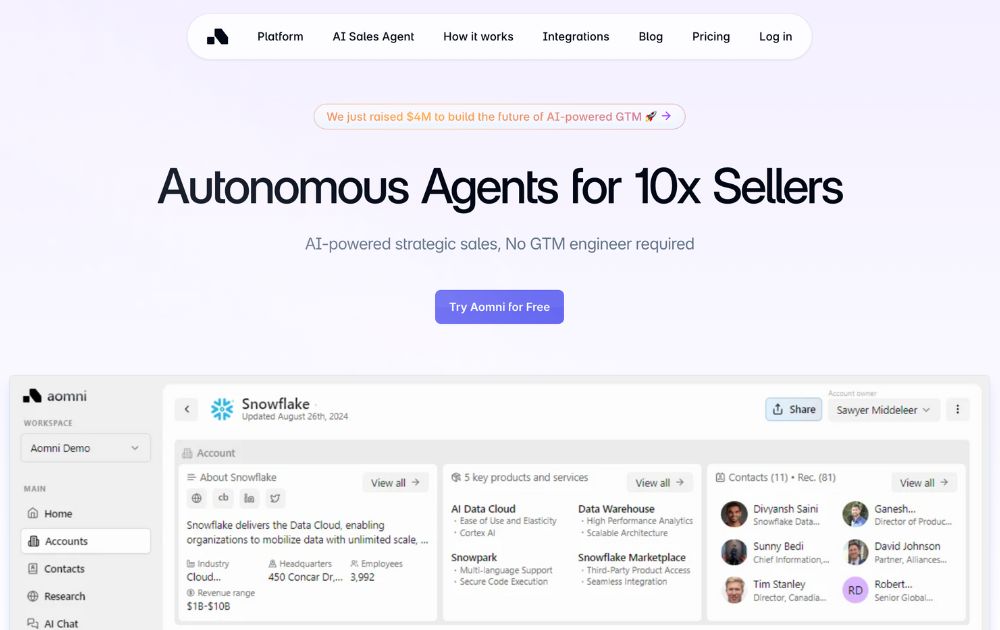
Packed with powerful AI-driven features, Aomni Agent is a tool that can help you grow your company’s outbound pipeline by conducting research to give you new Ideal Customer Profiles (ICPs). With it, you no longer have to create account plans for each of your prospects, as the AI tool will do it for you.
Aomni Agent engages with your customers, provides support, automates routine tasks, and gives you real-time insights and analytics, among many other features. To know its pricing and additional information, you need to contact them directly through their website.
2. Pictory
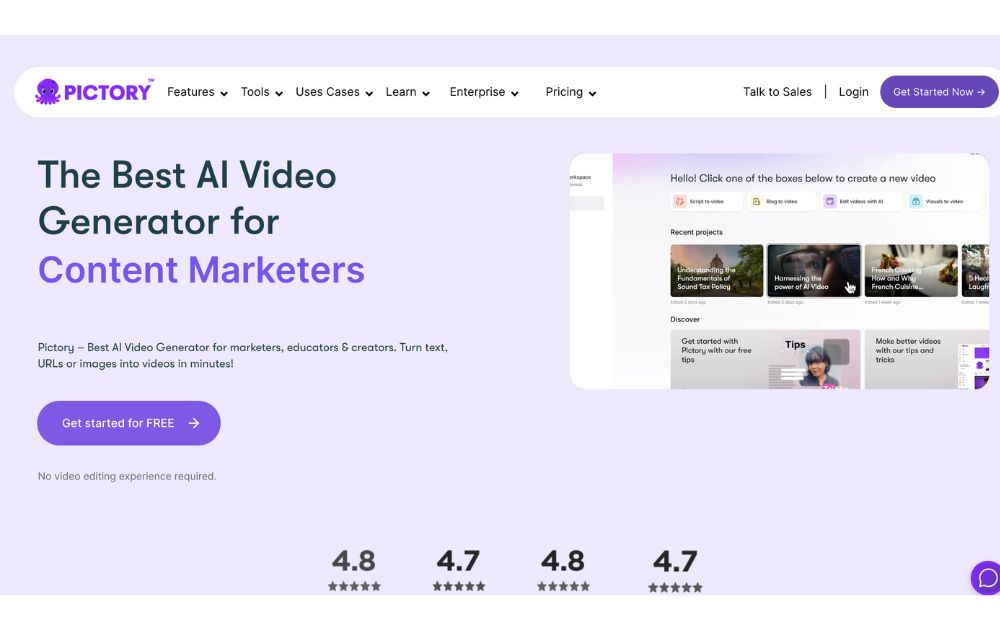
A video creation tool, Pictory, can help you create engaging and professional videos in minutes. It uses AI that automatically generates videos from your text, images, and audio. This means you get excellent results even without any video editing skills.
You can use Pictory to generate videos from your blog posts, articles, and other text. It can also edit existing videos and add images, music, or text. It offers a free trial and three plans with subscription fees that range from $23 to $119 per month.
3. Zeda.io
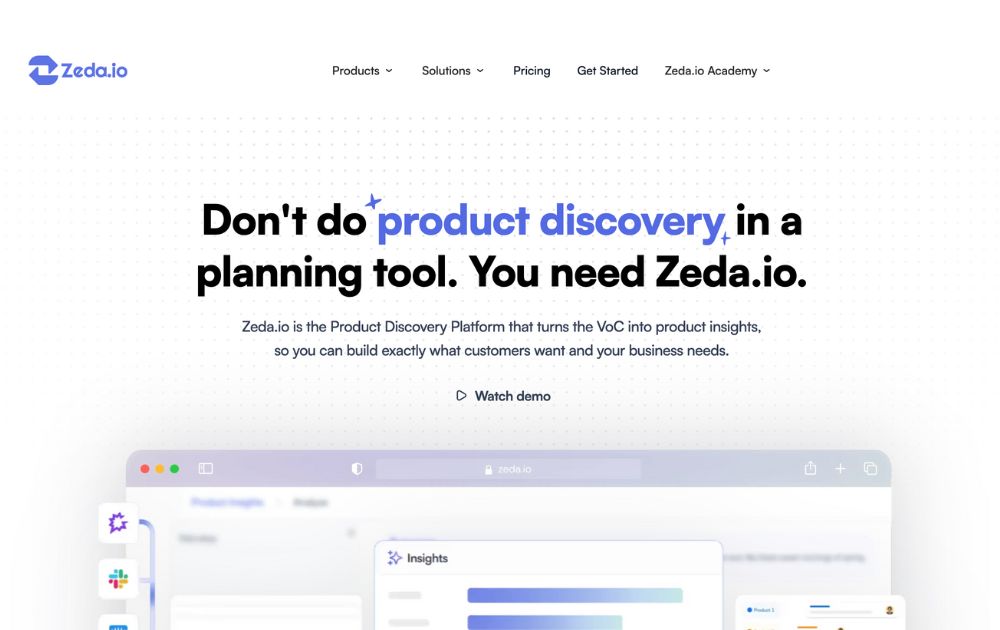
Zeda.io has grown into a powerful AI-powered product operating system. With its 2.0 update, the platform now connects customer feedback, product strategy, roadmapping, and internal documentation into a single intelligent workspace.
Its AI engine analyzes thousands of customer inputs, from surveys to reviews to support tickets, to identify patterns, prioritize features, and suggest product improvements. What used to take days of manual synthesis now takes minutes. The updated version also includes AI-generated product briefs, automated roadmap updates, and integrations with popular tools like Slack, Notion, and HubSpot.
4. Slite Ask
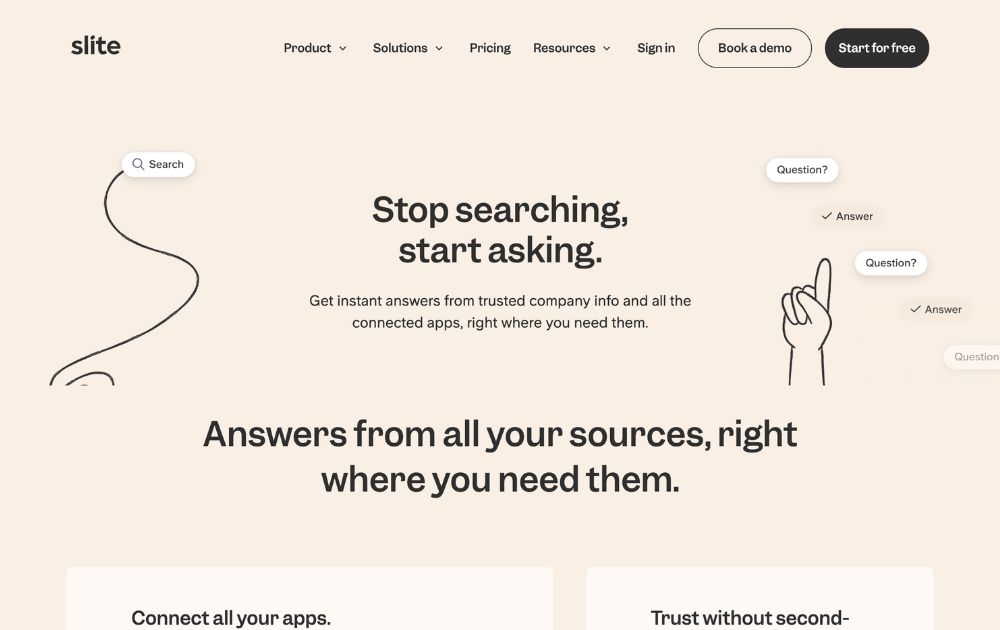
Slite Ask is one of the most reliable AI knowledge-base assistants for teams. Instead of manually searching docs or old messages, entrepreneurs can simply “ask” a question and get an instant answer based on their workspace knowledge.
The AI scans company documents, policies, SOPs, and internal notes to deliver accurate responses without hallucinations. This makes onboarding smoother and speeds up decision-making, especially for remote or hybrid teams.
5. Credal.ai
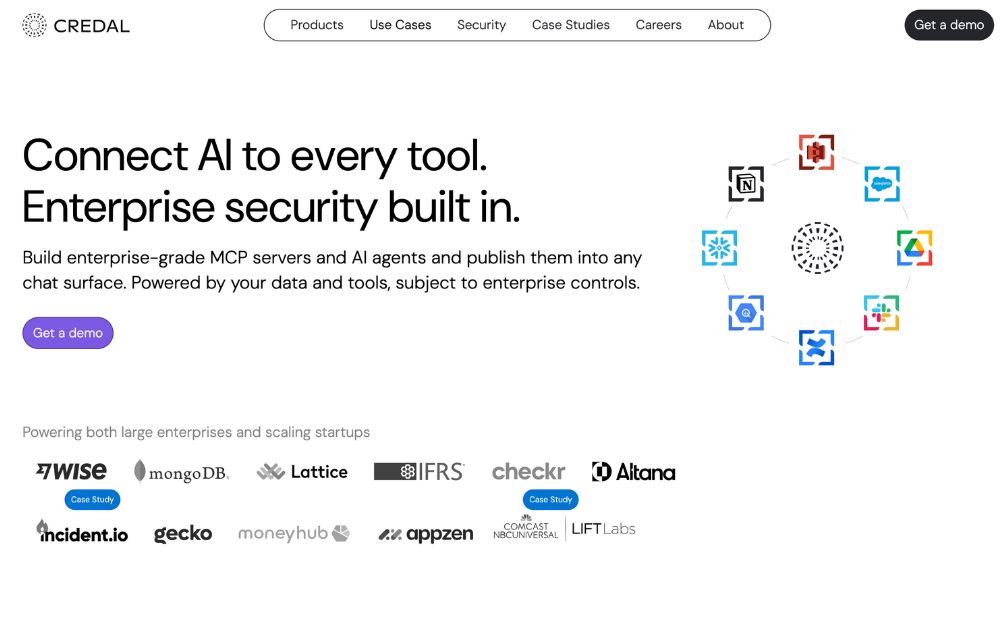
Keep your data safe with an AI tool that’s perfect for entrepreneurs. Credal.ai is a software that provides a secure environment for AI applications to run and monitors them for any potential security threats. This helps you protect your business’s sensitive data from unauthorized users.
Credal.ai protects your data from leaks, malicious codes, and unauthorized access. It has a free plan but with limitations, so to get the most out of this AI tool, a Team or Enterprise plan is recommended. Pricing starts at $500 per month.
6. Webscraping.AI
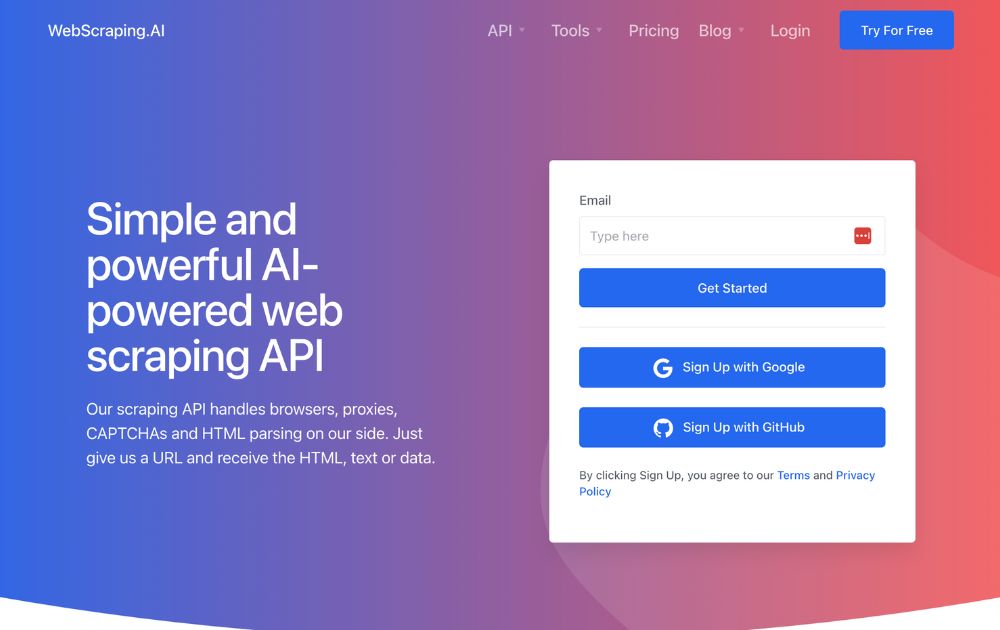
Web scraping is the process of extracting data from a website, such as stock prices, product details, company contacts, and many more. If you want access to this information, you’ll need Webscraping.AI. It is easy to use and won’t require you to have any coding or technical skills. All you need to do is enter the website you want to scrape, and the tool will automatically get the data from the website.
Webscraping.AI can help business owners make better decisions by providing accurate data to identify new opportunities. It can also help them make better decisions for their strategies. Pricing for this AI tool for entrepreneurs ranges from $29 to $249 per month, with no hidden fees.
7. ValueProp.dev
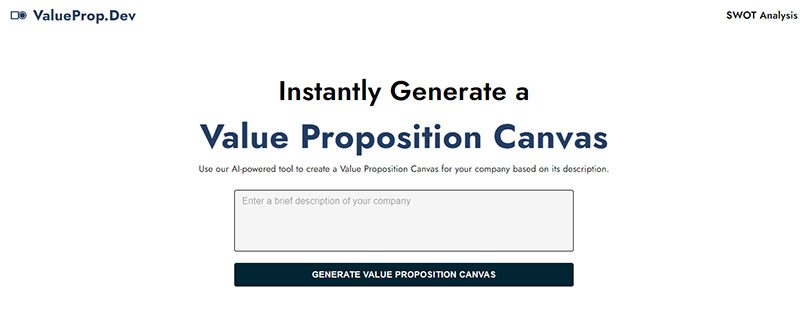
A value proposition is a statement that tells your customers what your product or service is all about. This can be tricky, but worry no more, as ValueProp.dev is an AI tool for entrepreneurs created explicitly for this. It uses machine learning to analyze your customer data to generate unique value propositions for you.
ValueProp.dev can help you improve your business by generating value propositions that significantly increase customer acquisition, retention, and sales. It is free for up to three value propositions, but they also have premium plans for more options and features. Pricing starts at $29 per month.
8. Lovo.ai
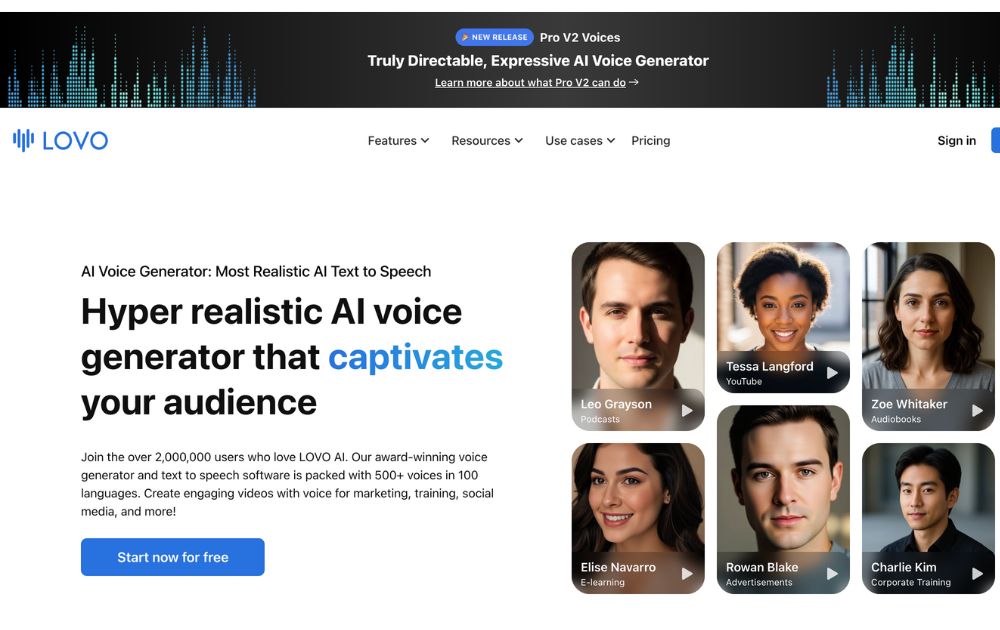
A text-to-speech and text-to-video platform, Lovo.ai can help you create engaging and informative content for your content marketing strategies. It uses AI to generate realistic and human-loke voiceovers, videos, avatars, and others. You can extend your reach globally as this tool can do voiceovers and videos in more than 140 languages.
Lovo.ai can help you increase your engagement, improve your SEO rankings, and boost conversions. You can try their free plan to give you an idea of what the tool can do for you. But for more features, a paid plan that starts at $19 per month can provide more value.
9. Zigpoll
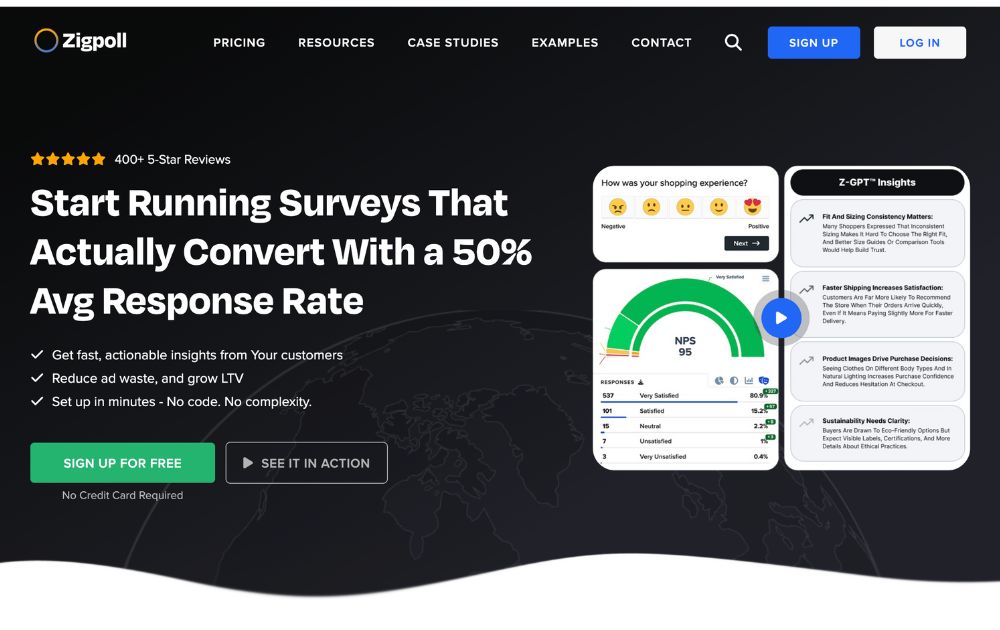
Zigpoll remains a solid choice for collecting customer insights, but its capabilities have expanded over the past two years. Today, Zigpoll uses AI to generate survey questions, summarize responses, detect sentiment, and even segment customers automatically.
Entrepreneurs can embed polls on websites, email campaigns, or post-purchase pages, then let Zigpoll’s AI categorize feedback into actionable insights. This helps brands quickly spot trends, product issues, or opportunities for upselling.
10. Pitches.ai
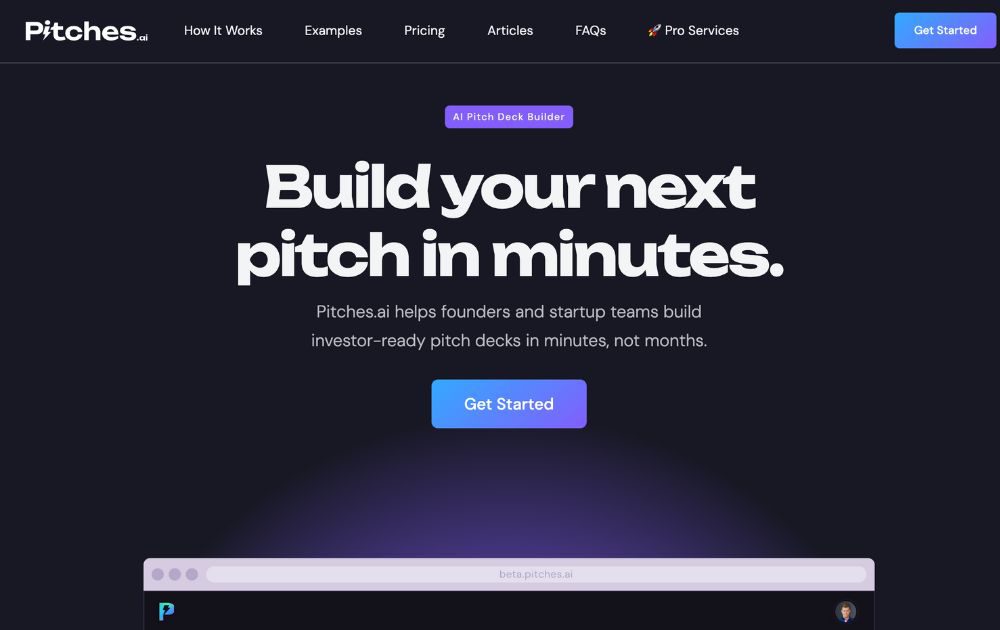
Are you looking to increase your business funding? Then creating the perfect pitch deck should be your priority. You can easily and quickly do this with Pitches.ai. It is an AI-powered tool for entrepreneurs to develop and refine pitch decks.
Pitches.ai analyzes pitch decks and gives you feedback on their structure, persuasiveness, and clarity. This gives you a higher probability of success. It offers four premium plans with prices ranging between $95 to $1,195.
Conclusion
Artificial intelligence is slowly becoming popular among business owners. Thanks to their many advantages, it’s no surprise that many will be using the technology from now on. These AI tools for entrepreneurs are a great example, and you should check them out today.
Featured Image Credit: Photo by Anna Shvets from Pexels
Business
What’s the Best Graphic Design Service for Education & eLearning?
Published
5 days agoon
November 13, 2025
TLDR: Best unlimited graphic design services for education and eLearning: ideal for quick turnaround, high-quality designs, and affordable pricing.
84% of communication is visual. Thus, for a world of education and eLearning, graphic design is imperative in the creation of projects for students and complex concepts. From interactive course materials to compelling marketing, strong visuals drive success. But finding a reliable, affordable design partner is tough.
Thus, it’s hard to come by a reputable service that can provide all your needs at a reasonable cost when it comes to project designs, turnaround expectations, anticipated quality and budgetary allowances.
But never fear! We’ve vetted what’s best for you!
1. Penji
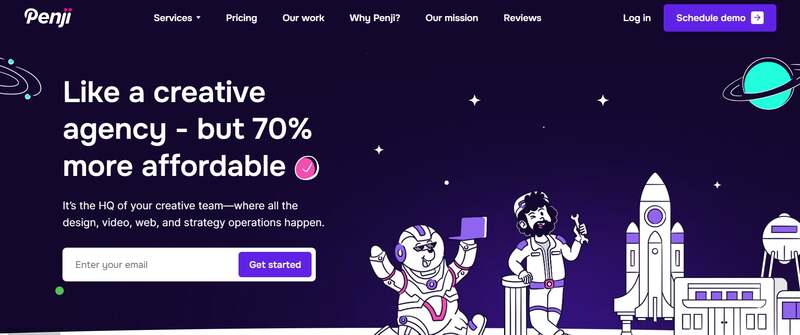
If you’re looking for the best for education and eLearning purposes, Penji has the best overall value as quality, turnaround time and offers have placed it at a reasonable flat fee monthly.
Penji is an unlimited graphic design service that works as you would expect – unlimited – which means that for a flat fee monthly, you’ll have access to your very own team of designers.
Features:
- A Well-Qualified Team of Designers: Whether you need e-learning interactive designs to course visuals (infographics, presentations) Penji’s graphic designers make everything visually appealing to an academic audience.
- Turnaround: Average turnaround is about 24-48 hours so you can keep churning out material for course creation or marketing.
- Unlimited Revisions: As many times as needed to get your requested project right.
- Accessibility and Submission Portal: Penji comes with a site that’s fairly user-friendly for ease of access in submissions, critiques and conversations.
2. Kimp
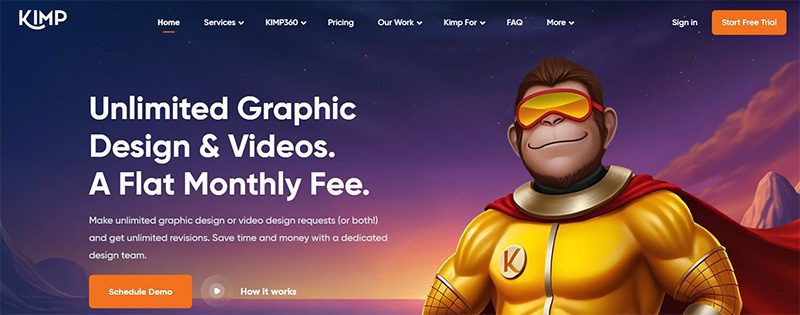
If you need an unlimited source and don’t mind one that’s second best, Kimp boasts graphics and even video. Consider this option with caution – some reviews do mention turnover can vary and this wouldn’t be the best reliable option if you’re on a time crunch for every project.
Features:
- Wide Range of Services: Kimp provides both graphic design and video services, offering a versatile creative solution.
- Dedicated Designers: You’ll work with a group as your designated team so you get to know your specific creators.
- Easier Feedback Opportunities: Feedback can be given on the Kimp site for creations with visual access as to what you want changed.
3. Design Pickle
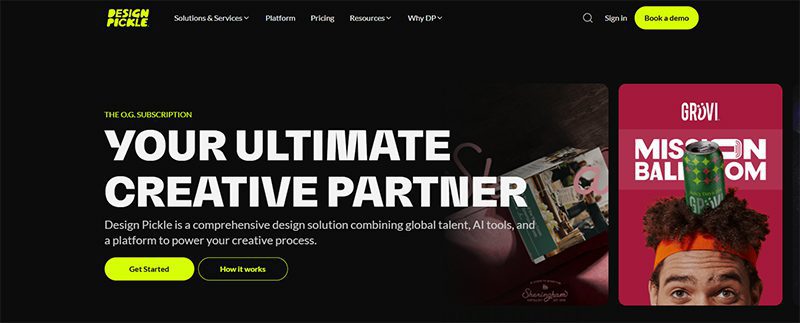
Design Pickle was one of the first unlimited graphic design services to go for an unlimited design game. This is helpful if you need custom illustrations or a presentation created for a polished look in any educated (or business) endeavor – higher tier subscriptions go with probability – but in all other worlds, it has more value than other sites when stacked against one another.
- Unlimited revisions to get the exact illustrations or graphics needed for presentations or other projects.
- Quick turnaround times to keep on schedule with 48 hour returns.
- Global Design Team: Boasts a diverse team of professional designers, offering expertise across multiple industries to match various client needs.
4. ManyPixels

ManyPixels is another reputable source that has unlimited graphic designs services but assignment transparency which means you’ll have one assigned designer to you, but they’re a bit more transparent with regards to who may (or not) be able to help you but will get back to you with good timing.
- One Dedicated Designer: ManyPixels is a company that does not have unlimited designs, however you’ll have one assigned who will know your needs better than most.
- Good Turnaround Time: Generally they’ll turn around assignments within 1-2 days after submission regardless of simplicity/complexity.
- Reliable Designs: Good for marketing or simple visuals/templates you’d want to use for educational continuity but they may not give as specialized feedback as you’d think.
Cover Image Credit: Photo by Fox on Pexels
Business
What are the Best Graphic Design Services for Fashion Brands?
Published
6 days agoon
November 11, 2025
For many businesses, graphic design means conversions, credibility, and brand recall. So, if you’re in the fashion industry, you also need to have significant visual assets if growth is your priority. If you need help finding the best graphic design service for your fashion brand, we made a list of the top five:
Penji

An on-demand graphic design platform, Penji offers unlimited graphic design services for fixed monthly fees. This allows you to send as many requests for lookbooks, catalogs, packaging designs, and many other marketing materials for less. Its team of top-notch designers assures you of consistent and high-quality work worthy of your fashion business.
Kimp

Built to support the creative needs of many businesses, including fashion, Kimp is another platform that offers unlimited design requests. It can craft product mockups, campaign visuals, packaging designs, and social media graphics, among others. It also provides video editing services, making it ideal for fashion companies that run reels, seasonal promos, or behind-the-scenes edits.
Designity

Combining agency-level creative direction with flexible access to US designers, Designity suits fashion brands that need polish, strategy, and scalability. They can provide you with social media graphics, online ads, label designs, logo and branding, and magazine layouts, among other key services.
Flocksy

If your business needs video editing, copywriting, and voice-over services, then Flocksy is the best graphic design service for your fashion brand. In addition, it also offers custom illustrations, packaging design, infographics, and many other design services. It operates on a flat-rate pricing model, making it a more cost-effective option than hiring freelancers or working with expensive agencies.
Reel Unlimited

With its predictable pricing and wide array of graphic design services, Reel Unlimited is an excellent design solution for fashion brands. Like many on this list, it offers unlimited design requests and fast turnaround times, making it the ideal option for those with tight schedules and limited budgets.

What’s the Best Graphic Design Service for Beauty & Wellness Brands

10 Best AI Tools for Entrepreneurs

Our Top 10 Video Editing Tools for Smarter Content Production

What’s the Best Graphic Design Service for Education & eLearning?

What are the Best Graphic Design Services for Fashion Brands?

How TikTok and Instagram Track You Using In-App Browsers

What’s the Best Graphic Design Service for Marketing Agencies?

Our Top 10 Video Editing Tools for Smarter Content Production

How TikTok and Instagram Track You Using In-App Browsers

Top 10 Free and Paid Employee Communication Tools

10 Best AI Tools for Entrepreneurs

10 Best Photo Editing Apps for Personal and Business Use in 2026

What’s the Best Graphic Design Service for Healthcare Brands?

What’s the Best Merchandise Design Company?
Trending
- Technology4 days ago
Our Top 10 Video Editing Tools for Smarter Content Production
- Business4 days ago
10 Best AI Tools for Entrepreneurs
- Business5 days ago
What’s the Best Graphic Design Service for Education & eLearning?
- Uncategorized4 days ago
What’s the Best Graphic Design Service for Beauty & Wellness Brands















